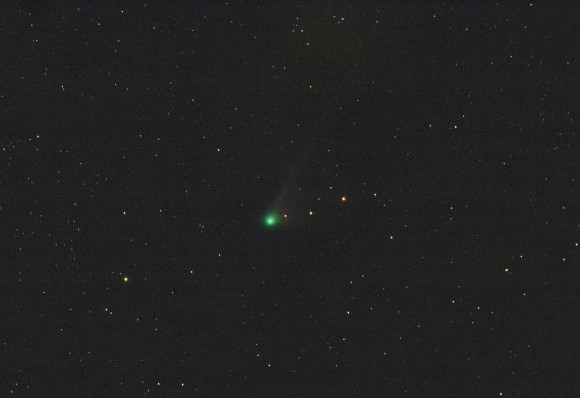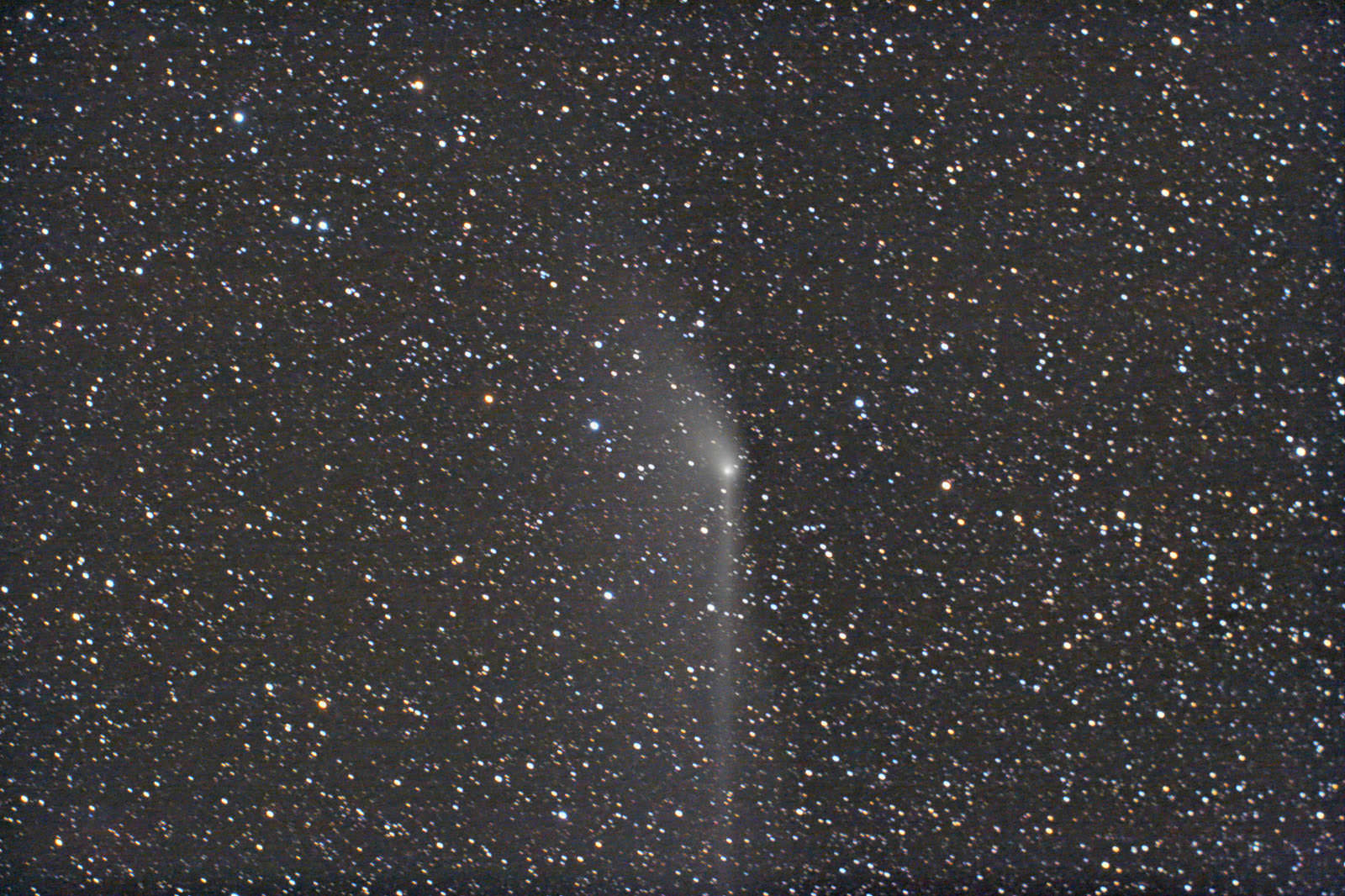The comet show is still not over! Early on May 16, 2013, astrophotographer Chris Schur from central Arizona was able to see two comets at once, Comet PANSTARRS AND Comet Lemmon. “We set up on our 14 foot tall balcony observing pad and was able to get the very low Comet Lemmon as it rose in the eastern sky,” Chris told Universe Today via email. “While PANSTARRS was up high by 2:30am, we had to wait until 3:30 before we could try Lemmon.”
While neither comet was visible to the naked eye, Chris reported that both were seen quite clearly in the 11×80 binoculars. “It was fun to go back and forth rapidly between the two objects to compare,” he said. “While PANSTARRS is now a very low surface brightness wedge shaped object, Lemmon was just a huge ball of light, about two magnitudes brighter.”

If you look carefully you can see the comets are stationary, and the stars are slightly trailed from the motion against the starry background.
“One point Id like to make is that PANSTARRS is currently exhibiting one of the most spectacular anti tails I have ever seen,” Chris said. “I have imaged hundreds of comets but never one with such a long sunward spike. This comet is VERY special.”
When viewed edge on from Earth, the anti tail appears as a spike projecting from the comet’s coma towards the Sun It is geometrically opposite to the other tails: the ion tail and the dust tail.
Thanks to Chris for sharing his great images of these comets!
Want to get your astrophoto featured on Universe Today? Join our Flickr group or send us your images by email (this means you’re giving us permission to post them). Please explain what’s in the picture, when you took it, the equipment you used, etc.


A link to a star map would be appreciated..?
http://www.fallofathousandsuns.com/comets.html
Hi Nancy,
I just made a video for four comets (PANSTARRS, Encke, Lemmon and ISON) reaching perihelion in 2013. In the video all four comets can be seen from four different perspectives simultaneously orbiting through the inner system.